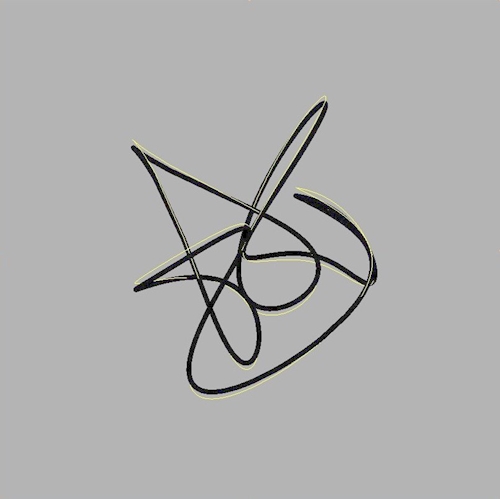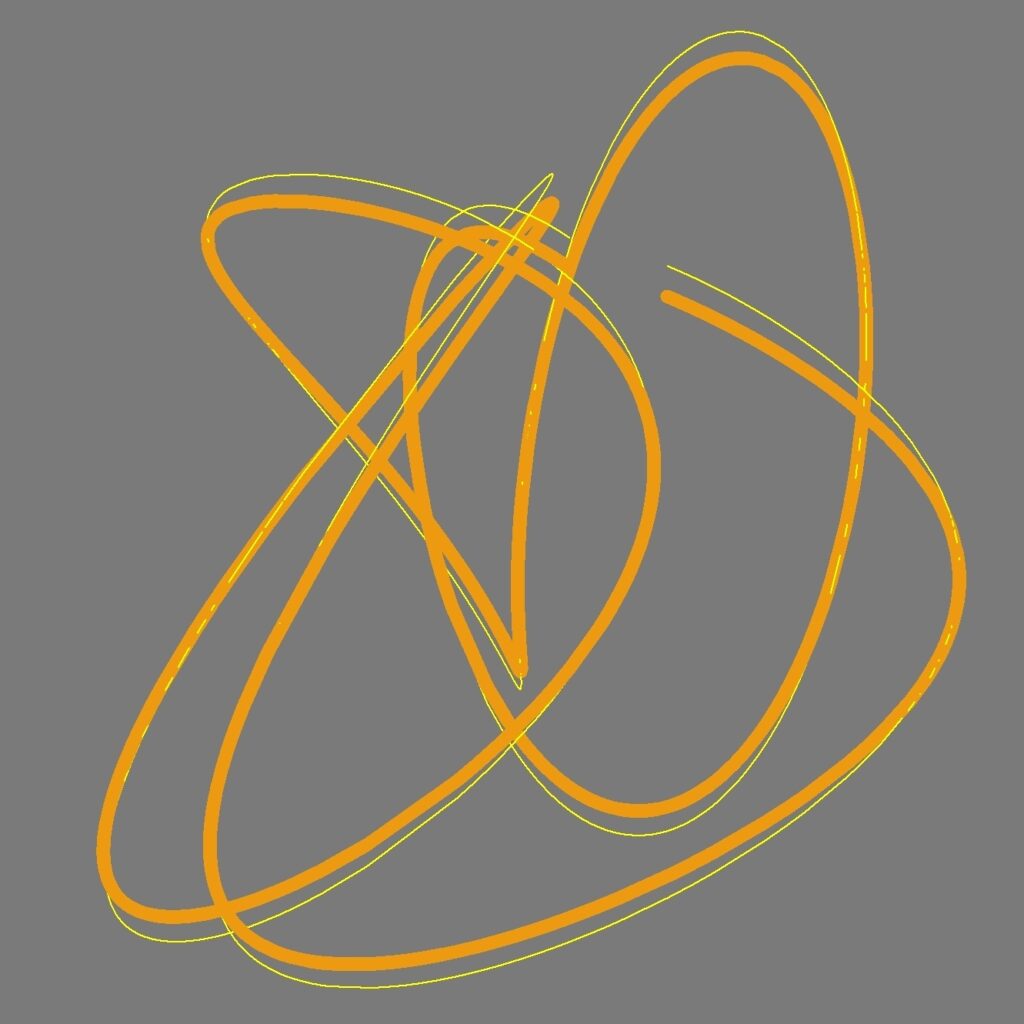















HISTORICAL TEXT FROM 1998 by Herbert W. FRanke – “about Contuniuty in mathematics and art”
“Elegance” in the Visual Arts?
Order relations such as symmetry have great significance for art. In my book Kunst und Konstruktion (Art and Construction), which was published in 1957, I pointed out that in the visual arts in particular there is another ordering relationship that can be mathematically grasped in the same way as symmetry. I call this continuity and refer to the mathematical term “continuity” for functions that are continuously differentiated. It refers in particular to lines and curves and is expressed above all in their uniformity: Continuous curves have a smooth course, a uniformity without interruptions, kinks or sudden changes of direction. At the time, I tried to describe this quality as the ‘elegance’ of the lines. I should rather not have done so, because a critic advised me to leave elegance to the tailors.
My assessment of continuity at that time was the result of my own observations, and as a physicist I tried to substantiate it through experiments. I used mechanical, optical and electronic systems to build up images from continuous curves, and I took the fact that they were shown in art magazines and exhibitions as confirmation of my view.






The subject of continuity has continued to occupy me, and I have recently taken it up again because one can now also give explanations for the aesthetic effect of such formations. This is particularly due to information psychology, which can be used to show that orders such as symmetry and continuity facilitate and accelerate visual perception – the gaining of an overview of the pictorial impression – independently of art. It is an ability that has evolved through evolution and was essential for survival in the earliest stages of human existence.
Since continuity can be captured by mathematical means, the method of computer graphics offers itself as a means of experimental aesthetics with which one can investigate the effects of art in concrete cases. I chose the classical ornament as the object of my experiments and programmed image generators that produce superimpositions of continuous curves. A remarkable result is that there must be a kind of equivalence between the elements used to build up the images and the structure built up from them in order to achieve optimal visual results. If one uses as picture elements units of a high degree of order – i.e. those that are effortless to take in – then you can make the picture itself more complicated, which intensifies the perceptual experience. But that is another subject. A successful overview of the current visual impression has positive emotional connotations, and this also applies, among other things, to the effect of art on the viewer. One can regard works of art as entities that are prepared in such a way that they attract the attention of the addressee, challenge him or her to engage with the perceptual offer and ultimately lead to successful perceptual processes.



